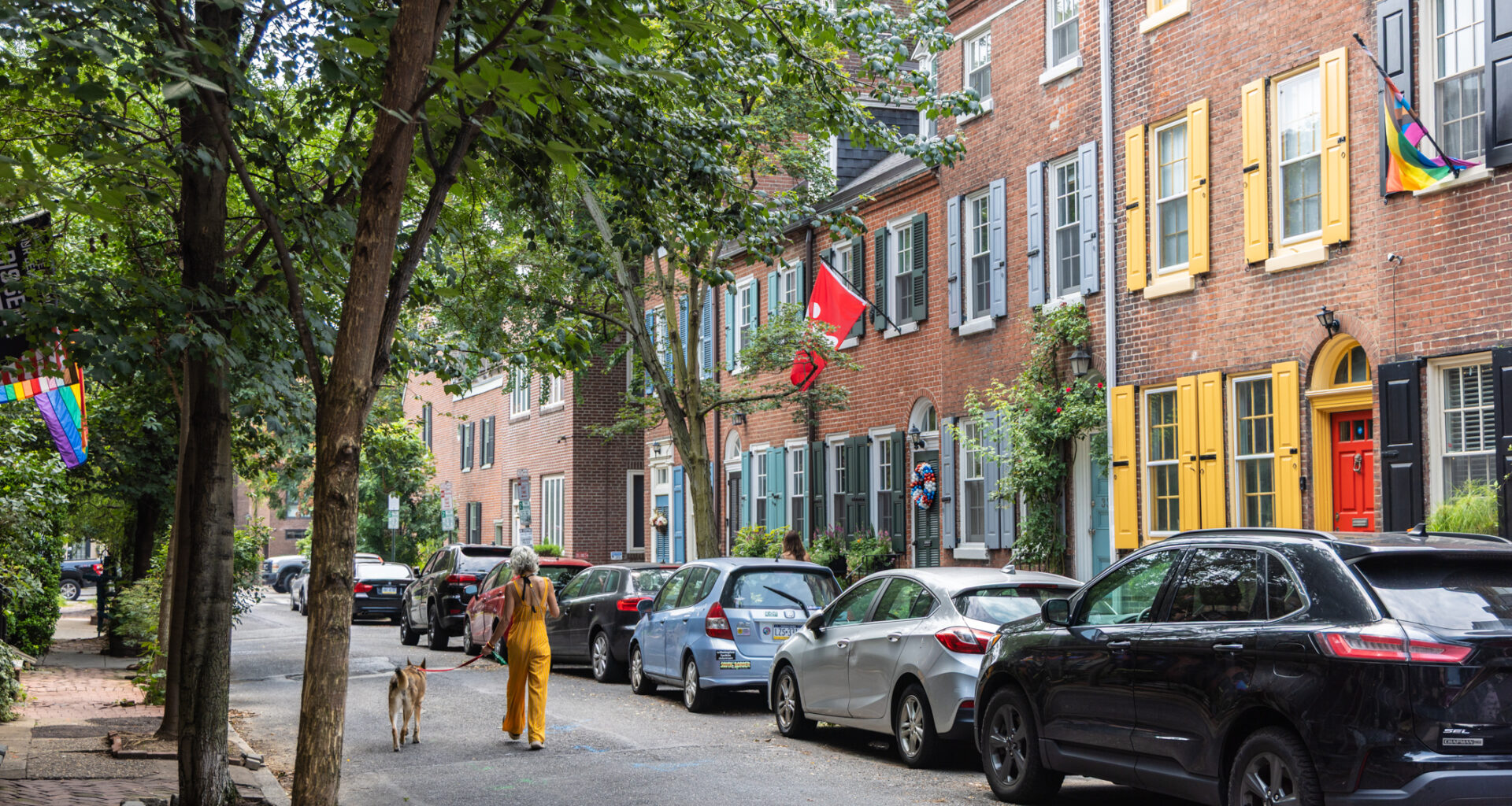As hundreds of residents have recently watched their homes become newly subject to oversight by the city’s Historical Commission, some of them have launched costly lawsuits to try to undo historic designations of their neighborhoods.
Among them are several homeowners in Washington Square West, who launched an online fundraiser to raise the $50,000 attorney fee for their suit against the commission. As of early August, they’d received pledges worth a little over $20,000, far short of the amount they say they need to keep the effort going.
Colin Murphy, who bought his home in Washington Square four years ago, said the group is hoping to receive contributions of about $500 from many of the 100-plus people who sent objections to the commission last year, before the district was approved.
Murphy, a real estate agent, acknowledged that $500 is “not an amount to stick your nose up at.” But he argued that it’s much less than the amount it could cost a resident to comply with commission rules — for example, to install historically authentic doors or windows — if the designation stays in place.
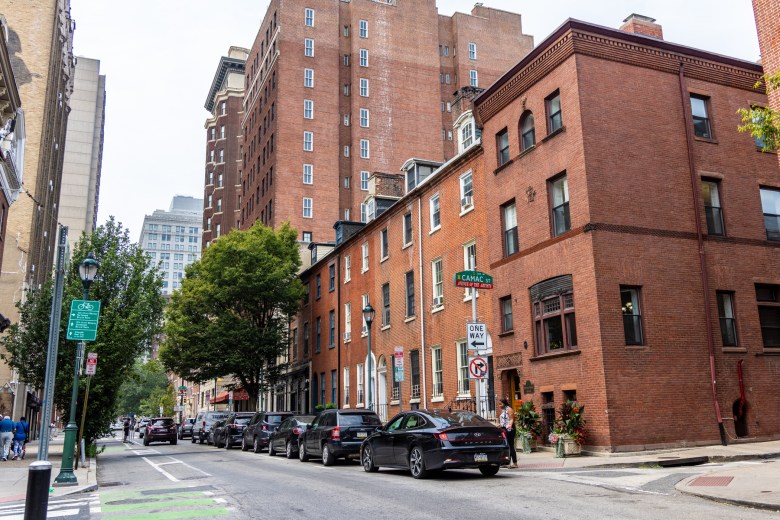 Camac and Spruce Streets in Philadelphia’s Washington Square West historic district. (Kimberly Paynter/WHYY)
Camac and Spruce Streets in Philadelphia’s Washington Square West historic district. (Kimberly Paynter/WHYY)
“Would you rather pay $500 now to get the district potentially thrown out entirely, or wait until you have to do updates on your house, and spend thousands of dollars more than you were expecting on a project that was already going to cost you a fair sum to begin with?” he said.
Yet even if they can afford their lawyers’ fees, the homeowners and landlords who are suing to appeal three recent designations may face major challenges when their cases are heard.
Judges have on occasion overturned the Historical Commission’s moves to protect individual buildings, accepting an owner’s arguments that a structure didn’t fit the panel’s guidelines. But no court has ever canceled an entire historic district covering a large number of homes, according to Paul Steinke, executive director of the Preservation Alliance for Greater Philadelphia.
“Not to my knowledge, not that I have ever seen, not in this city,” said Steinke, whose organization has helped prepare historic nominations for Washington Square West and other districts. “I don’t really place much credibility in their chances of succeeding. But of course they have the right to try.”
A wave of new historic districts
Philadelphia established the Historical Commission in 1955, as part of a movement to keep architecturally and historically significant buildings in neighborhoods like Society Hill from being demolished during the era of urban renewal.
Initially it focused on protecting individual structures. The first full district, Main Street in Manayunk, was created in 1984, and a revised preservation ordinance in 1986 provided for the subsequent creation of many more.
Some districts cover a few dozen homes, while others, like Washington Square West, include several hundred or more residential and commercial structures. The commission reviews owners’ requests to make changes to their buildings and can block demolitions. The agency also enforces rules on the appearance of home exteriors, as seen from the street; for example, it may require owners to maintain historically accurate doors, windows, bricks and other materials.
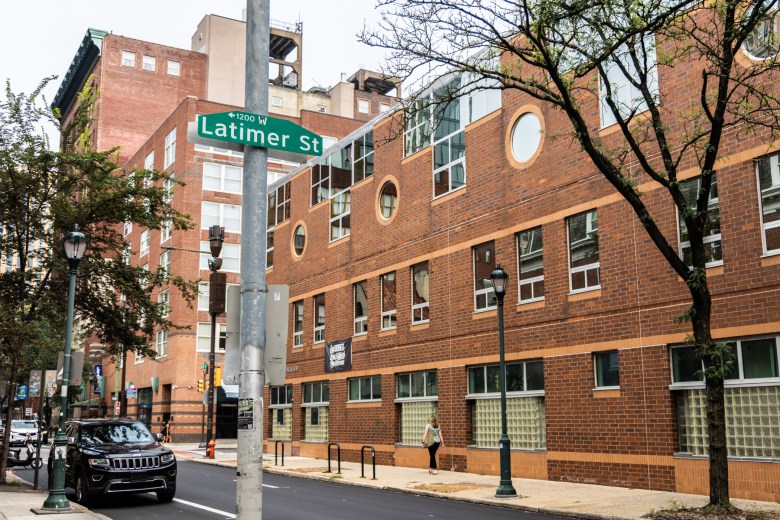 11th and Locust Streets in Philadelphia. (Kimberly Paynter/WHYY)
11th and Locust Streets in Philadelphia. (Kimberly Paynter/WHYY)
“Most people in this city recognize that there is a dearth of standards in building design and maintenance overall. People complain about it all the time,” Steinke said. “Well, within historic districts, there is a standard, and that is to the benefit of both property owners and the city as a whole.”
Pushback from some property owners and councilmembers, along with a staff shortage at the Historical Commission, halted the creation of more districts in the early 2010s. In 2017, following an outcry over demolitions of notable buildings and Philadelphia’s relatively small number of protected properties, the Kenney administration beefed up the agency and it began creating districts again.
Washington Square West, with 1,411 properties, was designated in September. Two other new districts are Southeast Spruce Hill, with 572 properties, and the Northwest Philadelphia Apartments thematic district, which includes 30 scattered apartment buildings in Mount Airy and Germantown.
All three designations now face court challenges, with oral arguments scheduled for October in the first two cases and in December for the third.
The $8,500 door
The exact legal arguments the Washington Square West residents plan to make in court are not clear from the filings in their case so far. Their attorney, Michael McClure of Ballard Spahr, did not respond to a request for comment.
But Murphy and others argue that the designation should be canceled or scaled back because of its potential high cost to residents. They point to specific harms they say property owners have suffered since it went into effect.
For example, Spruce Street condo owner Deepan Patel was denied permission to replace a mid-19th century front door with a new door from Home Depot that would cost $178 or $1,028, depending on the model selected. When he contacted contractors about fabricating a historically accurate door, the estimates started at $8,500, not including installation, according to emails he provided to the Historical Commission.
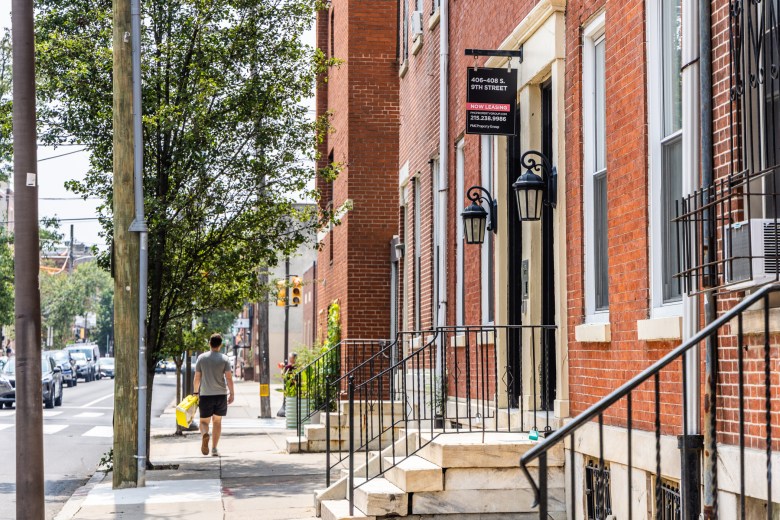 Homes at 9th and Pine Streets in Philadelphia’s Washington Square West historic district. (Kimberly Paynter/WHYY)
Homes at 9th and Pine Streets in Philadelphia’s Washington Square West historic district. (Kimberly Paynter/WHYY)
“My understanding is that the homeowner has actually elected to do nothing, and now that existing door is still in place and is actually just rotting away,” Murphy said. “It’s going to turn into this situation where you’re going to have more houses that look, for lack of a better term, scrappy and ugly on the outside. The whole point of the historic district’s intention, I believe, is to prevent that from happening.”
The commission’s architectural committee discussed the door in some detail, according to minutes from its February meeting. Some members said a new custom door, while expensive, would be of high quality and last for many years. Others suggested Patel only needed to replace the frame or part of the door, at lower cost. Patel did not respond to a request for comment.
The Historical Commission is not obligated to consider costs when designating districts or reviewing alterations, and it’s unclear whether such an argument would have any sway in court.
The commission says its goal is to “manage change, not prevent it.” It says its staff members are available to give free advice on making alterations, it can’t force you to make any changes, and 90% of projects are approved by staff without going before the commission itself.
However, Murphy and other critics argue that compliance costs and the cumbersomeness of the review process nevertheless make it difficult to maintain or improve properties in a historic district. That discourages sales and redevelopment, stymies efforts to build much-needed new housing, and threatens to freeze neighborhoods “in amber,” they say.
Complaints of broad-brush designation
The Washington Square West plaintiffs also contend there were flaws in the nomination process, which could be raised in court.
Last year, some said they hadn’t received official notice of the nomination, as required. The commission’s executive director Jon Farnham contested that claim, saying the city had hung posters around the neighborhood and sent about 5,000 notification letters to residents.
The objectors argued that the covered buildings lack a unifying theme, as they were built over a span of some 240 years in a variety of styles. Plaintiff Jonathan Hessney noted that the nomination document didn’t describe any specific cultural or historical significance for most of the listed homes.
“There’s an approximate date of construction, and maybe a description of the building — it’s built out of masonry or whatever — but no history listed. And then all of a sudden it’s either ‘contributing’ or ‘non-contributing’ [to the district]. It’s unclear why buildings are that way,” Hessney said in a recent interview.
“For my property, they don’t even have a picture of the facade. They say we’re not visible from the public right of way. And for some reason, we’re contributing to the district,” he said.
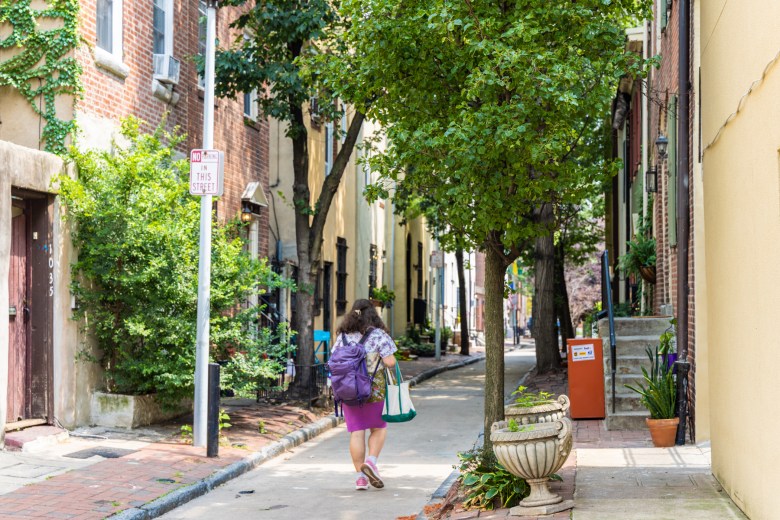 Waverly Street between 10th and 11th in Philadelphia. (Kimberly Paynter/WHYY)
Waverly Street between 10th and 11th in Philadelphia. (Kimberly Paynter/WHYY)
Preservation guidelines do not require historic districts to consist of similar buildings, or buildings that are significant for the same reason. When the Historical Commission voted to approve the Washington Square West district in September, it cited several different criteria that parts of the area met: associations with historical LGBTQ+ and Black communities, well-preserved examples of at least five architectural styles, the work of prominent architects, and innovative real estate development patterns, among others.
Farnham also noted at the time that nominations typically don’t lay out which buildings meet which designation criteria, according to the meeting minutes.
“A district doesn’t have to be a kind of unified development to qualify. Wash West clearly reflects the history and the people of the city of that era when it was mostly built,” Steinke said. “So I don’t think they’re gonna get much mileage out of that.”
The Historical Commission declined a request for comment, citing the ongoing litigation.
What constitutes a significant building?
The plaintiffs in the two other appeals are represented by attorney Michael Phillips of Klehr Harrison. He argues that some past historic district designations — for example, the small Chestnut East Commercial district, around 7th and 8th streets, that was approved in 2021 — include some architecturally unremarkable buildings and have impeded economic growth.
“When we talk about how are we going to continue to develop and grow as a city, it becomes extremely difficult do that, and developers will just shy away from looking at that block, knowing all of the obstacles that they could face,” Phillips said. “Living in a city like Philadelphia, clearly it’s necessary to preserve the history, but I think we need to do so in a thoughtful, deliberative manner.”
That argument could influence City Council to modify the city’s historic preservation law, perhaps to create multiple, less-stringent levels of restrictions, an idea some preservationists have supported. It’s not exactly a legal argument, however.
With regard to Southeast Spruce Hill, which contains a large collection of distinctive Victorian homes, Phillips said his clients’ objections are largely procedural, continuing points they raised during the nomination process last year. The appellants include two property management companies, Campus Apartments and University City Housing, who for years have opposed historic designation of the area.
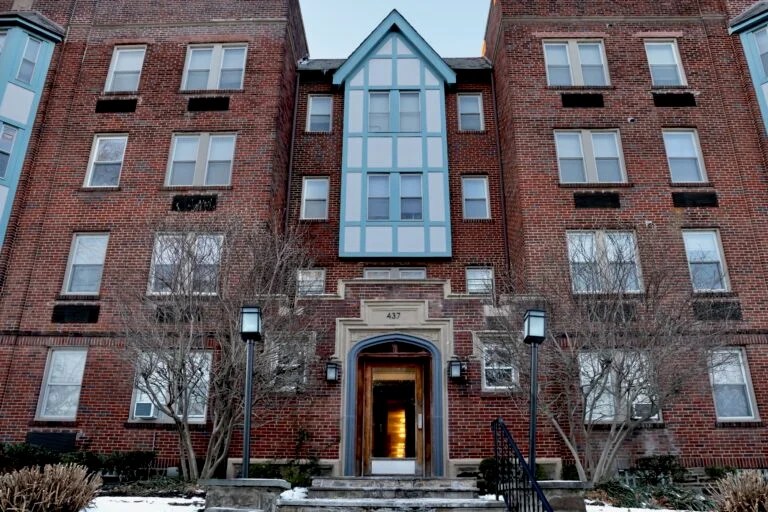 Cloverly Park at 437 West School House Lane in Germantown. (Emma Lee/WHYY)
Cloverly Park at 437 West School House Lane in Germantown. (Emma Lee/WHYY)
They argue that the nomination was flawed in part because it began with a proposal to designate all of Spruce Hill, but was altered to cover just the neighborhood’s southeast quadrant. The nomination was split up to reduce the administrative burden on Historical Commission staff, and the agency could nominate the other quadrants in the future.
“If you’re saying that Spruce Hill warrants historic protection based on this nomination, which just speaks to all four quadrants, then you’re really prejudicing those individuals in the other quadrants who have not had an opportunity to review and set forth their position on it,” Phillips said.
He also contends the designation was “hastily approved” and the process lacked “balancing of the public interest,” arguments often made by objectors to nominations.
The small Northwest Philadelphia Apartments thematic district consists of 30 buildings scattered around Mount Airy and Germantown near SEPTA’s Chestnut Hill West Line. Phillips represents the Lindy family, which has owned the 65-unit Sedgwick Gardens in West Mt. Airy since it was built in 1939. The building is a “family heirloom” that they should be able to modify as they see fit, he said.
The apartments were nominated on the grounds that they have a common history rooted in the city’s regional rail system and transformed that section of the city in the first half of the 20th century. But Phillips — much like the Washington Square West appellants — argues that a unifying theme among the 30 buildings is “sorely absent.”
Essentially, the city shouldn’t be protecting homes unless they have individual architectural significance, he and others argue.
“Simply because an individual historically lived in a place or something happened in the past that no longer is visually discernible, should not then provide all these limitations to future uses and adaptive uses,” Phillips said.
